

We’re here to help! Wild Yards is a completely free website that is 100% dedicated to helping you create a wildlife-friendly, sustainable yard. Read more
WildYards is reader-supported. When you buy a product through a link on our site, we may earn a comission. Every product is independently selected by our (obsessive) editors and our reviews are unbiased and objective. Read more about our mission or our privacy policy.
One plant that’s receiving some extra attention these days is creeping thyme. This low-growing ground cover spreads quickly, creating a thick blanket of foliage. Because creeping thyme only grows a maximum of 2 inches tall, it has become a popular substitute for traditional turf lawns since it doesn’t need to be mowed often. Plus, its delicate flowers are popular with pollinating insects. While creeping thyme is all the rage right now, you may be wondering, does this plant live up to all of the hype? Or is creeping thyme invasive and a waste of valuable garden space?
Creeping thyme is a fast-growing ground cover that will quickly fill in the bare spots in your landscaping. However, it is not considered to be invasive. It won’t smother surrounding plants and is easy to keep under control with careful maintenance.

What is creeping thyme?
A member of the mint family, Lamiaceae, creeping thyme (Thymus serpyllum) is a flowering herbaceous perennial that produces finely textured foliage and delicate flowers in shades of white, pink, and purple. Its eye-catching appearance and pleasant fragrance make it a popular choice for landscaping. This fast-growing ground cover adds interest to flower beds, rock gardens, and raised garden beds.
Creeping thyme is a hardy little herb. Although it isn’t often used in cooking, like other thyme varieties, its easy-going nature means it’s a cinch to care for. That’s a huge advantage, especially if you’re a gardener who wants a gorgeous yard but doesn’t have much time to dedicate to maintenance work.
Native to the western Mediterranean region, creeping thyme can be found growing wild in France, Spain, and Italy. Here in the United States, creeping thyme is hardy from zones 4 through 10 and can tolerate temperatures down to around 20 degrees Fahrenheit. Creeping thyme is highly adaptable, growing well in full sun to partial shade. Like other plants native to the Mediterranean region, including rosemary and lavender, creeping thyme performs best in well-draining sandy soils and does not require regular fertilization to grow well.
Is creeping thyme invasive?
Creeping thyme is a fast-growing ground cover that can spread rapidly. It can also self-seed, allowing it to spread effortlessly. When all of your creeping thyme’s growing requirements are met, the plant will grow extremely well — so much so that its growth may surprise you. But is creeping thyme invasive, or is this just gardening hearsay?
Although creeping thyme is hardy and grows quickly, it is not considered to be an invasive species. To truly be considered invasive, a plant must meet several requirements.
- Fast-growing. Invasive plants grow quickly, robbing native plants of valuable resources, resulting in a steady decline in native vegetation.
- Highly adaptable. Invasive plant species have their own set of preferred growing requirements, the same as any other plant. But invasive plants can adapt to different sun, soil, and climate conditions, allowing them to thrive in a variety of environments.
- Reproduce quickly. Many invasive species propagate quickly, either by producing huge quantities of seeds or through vegetative reproduction.
- Difficult to eradicate. Because invasive plants can be propagated vegetatively, they can be tough to remove. Even if just a piece of a root or stem is left behind, the invasive plant can regrow and live to fight another day.
- Few, if any, predators. Invasive plants are often not favored by foragers, like deer, which allows them to grow freely undisturbed.
While creeping thyme certainly ticks many of these boxes, they don’t meet all of the necessary requirements to be considered an invasive species. That’s largely because creeping thyme is easy to remove and control, and that brings us to our next topic of discussion.
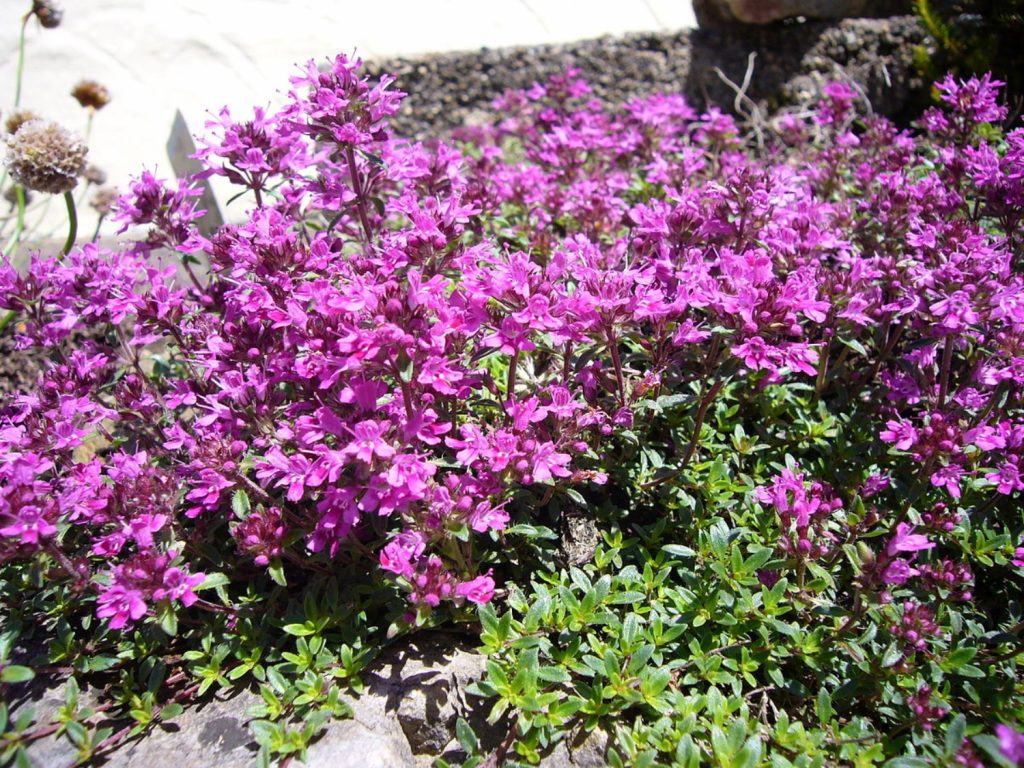
How can you manage creeping thyme?
Creeping thyme isn’t invasive by nature. But if you allow it to grow wild, then it can become somewhat invasive. However, the same could be said of many other fast-growing ground covers, including chamomile. With a little careful management, you can keep your creeping thyme under control so the other plants in your garden can flourish as well.
Start by pruning your creeping thyme regularly. Creeping thyme can be pruned at any time during the growing season, so trim it back whenever you want to help it maintain the desired size. Use sharp scissors or garden shears to remove dead or diseased foliage and old, woody stems. This helps prevent the plant from becoming leggy and teaches it to focus on producing new foliage, rather than spreading. If your creeping thyme covers a large area, you can mow it instead.
For best results, avoid pruning your creeping thyme on a hot, dry day, as this can stress the plant. Ideally, you should trim the plants back in the early morning hours, and water the plants well afterward to encourage strong roots and healthy new growth. It’s best to kickstart spring with heavy pruning, and only prune lightly for the rest of the season.
If your creeping thyme is spreading to areas where you don’t want it to grow, then simply uproot the unwanted portions. You can spread mulch afterward to prevent new sprigs from sprouting up. Like all varieties of thyme, creeping thyme is easy to propagate from cuttings, so leaving little clippings in your flower beds can result in new plants. Be sure to pick up all of the trimmings when you’ve finished pruning and toss them in your compost bin to prevent them from spreading.
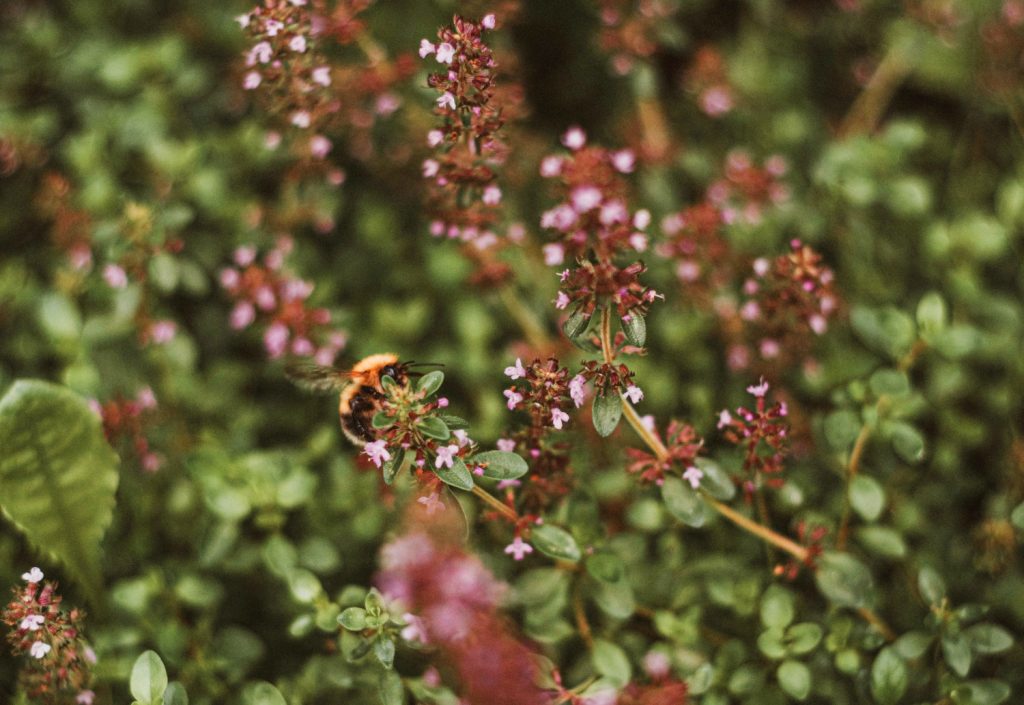
Where should you plant your creeping thyme?
Where you grow your creeping thyme can influence how fast it grows and how well it spreads. Its low growth habit makes it well-suited to flower beds and other large spaces because it works so well as a ground cover. But if you’re worried and wondering if creeping thyme is invasive, then how and where you plant your creeping thyme can help you manage its spread more effectively.
If you live in a warm growing zone, plant your creeping thyme in full sun. Although this plant thrives in full sun, it prefers some extra shade in especially hot regions. The extra heat can help slow its growth so you won’t have to worry about it overstepping its bounds. Conversely, if you live in a cooler growing zone, try planting your creeping thyme in partial shade. The slightly cooler temperatures and lack of light will help prevent the plants from growing too much and too quickly.
You can also try growing your creeping thyme in raised flower beds or hanging baskets. Providing the plants with limited growing space naturally makes it easier to keep them reined in. For creeping thyme growing in in-ground flower beds and landscaping, use an edging to border the plants. Old railroad ties, bricks and stones, landscape timbers, and even upside-down bottles can be used to create an attractive border for your creeping thyme.
Regardless of where you decide to plant your creeping thyme, be sure the soil drains well. Creeping thyme does not like to sit in water for long periods. If your soil tends to hold onto moisture, use gravel, sand, and/or perlite to improve drainage. You can also use potting soil designed for lavender to improve the soil structure.
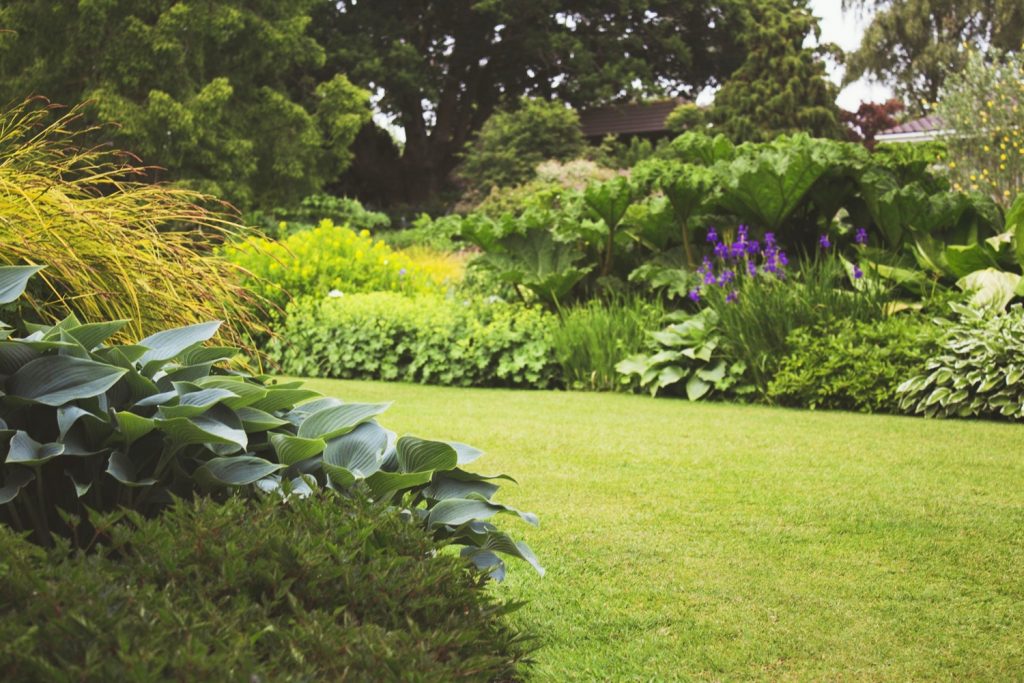
Why should you grow creeping thyme in your garden?
Creeping thyme has a lot to offer. It grows quickly, it can survive a variety of sun and soil conditions, and it doesn’t need to be pampered to grow well, unlike hydrangeas, roses, or azaleas. But if you’re still not sold on this versatile ground cover, here are a few more reasons why you should consider growing creeping thyme in your garden.
It’s low-maintenance
We all want a pretty landscape, but we don’t all have the time or, frankly, the desire to get it. If you want the look without the work, creeping thyme should be your go-to ground cover. This plant is about as low-maintenance as it gets, which makes it a great choice for foundation planting and flower beds.
With creeping thyme, all you really have to do is plant it and watch it grow. Regular waterings help the plants get established quickly during the first year. After that, annual rainfall is usually enough to keep this drought-resistant ground cover satisfied. Again, pruning can help you keep creeping thyme in check. But these plants do not need to be fertilized or fussed over in any significant way to grow well.
Creeping thyme helps with erosion control
If you have a sloped front yard, then you know how important erosion control is. Dirt can get pretty expensive after a few truckloads, and having to build up your yard year after year gets pricey quickly. Fortunately, creeping thyme can help keep your yard’s soil in place, allowing you to keep more of your money in your bank account.
For yards on a mild slope, creeping thyme may be all you need to help keep your soil in place. This plant doesn’t grow particularly deep roots, but it does develop thick roots over time, preventing soil displacement due to wind and water flow. For steeper hills, consider planting creeping thyme with larger plants that produce extensive root systems, like willow trees, dogwoods, and redbuds.
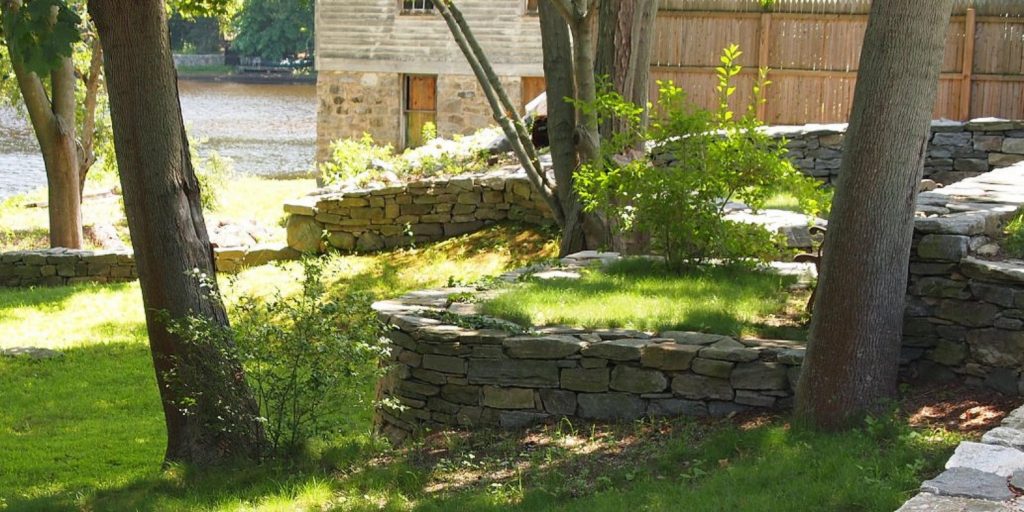
It stands up to regular foot traffic
Is creeping thyme invasive? No, not really, but its spreading nature has gained this plant a lot of well-deserved popularity. Many homeowners are switching out their traditional turf lawns and replanting outdoor spaces with creeping thyme. This plant’s dense foliage stands up to everyday wear and tear, making it an ideal ground cover even in places that see heavy foot traffic. Plant your creeping thyme in between stones on a footpath, or as an edging along a driveway or sidewalk. This plant will recover quickly, even when compacted repeatedly.
As mentioned previously, creeping thyme can be mowed back anytime it grows taller than you would like. However, creeping thyme only grows about 2 inches tall at the most, so even when it’s growing “out of control” it will never get as out of hand as grass might.

It’s attractive
Creeping thyme is grown as an evergreen in warm climates, where it adds year-long interest to any landscape. This is an attractive plant that can make any flower bed appealing. Its handsome foliage and understated flowers make it a wonderful living alternative to wood chip mulch.
Whether you’re going for a cottage vibe with your flower beds or a more modern, Mediterranean-style landscape, creeping thyme can help round things out. Creeping thyme fills in all of the gaps where shrubs, trees, and perennials don’t fill in, creating an attractive backdrop for the other plants in your landscaping.
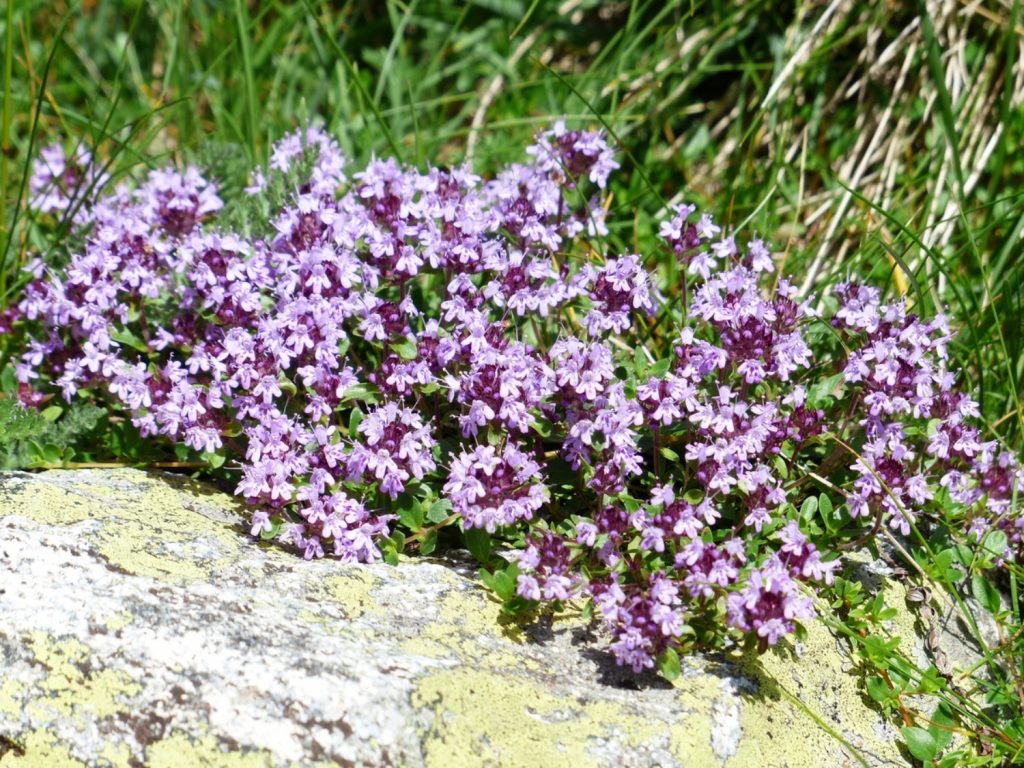
Creeping thyme is popular with pollinating insects
Another one of the many reasons why we love creeping thyme is because it’s a hit with pollinating insects. Keeping neighborhood bees, butterflies, and predatory wasps healthy supports your local ecosystem from the bottom up. When the native plants in your region thrive, the insects do, too, which leads to more fruit and foliage production to feed wildlife. It helps keep things in symbiotic balance.
Creeping thyme’s fragrant bloom in clusters, producing scads of white, pink, and purple flowers. Plants typically bloom throughout the summer months, providing pollinating insects (and even hummingbirds) with plenty of opportunities to feed before the growing season comes to an end.

It’s deer-resistant
Creeping thyme has a strong, yet pleasant, aroma, and thick, textured foliage that adds depth to flower beds. It’s part of what makes it so popular. But its powerful fragrance and rough leaves mean creeping thyme isn’t such a hit with deer.
Deer prefer to eat tender green new growth. Fresh shoots and young leaves are full of delicious sugars, and their soft texture makes them highly palatable. The fuzzy texture and strong fragrance of creeping thyme naturally repel deer, who will go out of their way to avoid nibbling on its foliage.
Although creeping thyme is considered deer-resistant, there are exceptions to the rule. Young deer will nibble just about any plant, even the ones that are supposed to be 100% deer-proof. Droughts and periods of overgrazing can also encourage deer to eat plants they wouldn’t normally pay attention to. So there may be times when deer take a few samples off your creeping thyme. But, in general, this plant is highly deer-resistant.

Creeping thyme helps prevent weeds
To a long-time gardener, a good ground cover is worth its weight in gold. That’s because ground cover helps prevent weeds, which saves time and labor. Creeping thyme creates such a thick carpet of foliage that it quickly smothers weeds before their seeds even get a chance to germinate.
Because creeping thyme prevents weeds, this can also help you save on your fertilizer bill. The plants in your landscaping won’t need as much plant food if there aren’t any weeds around to compete with. And because creeping thyme has low nutrient needs, anyway, it can help keep weeds out without posing a threat to the plants in your garden.
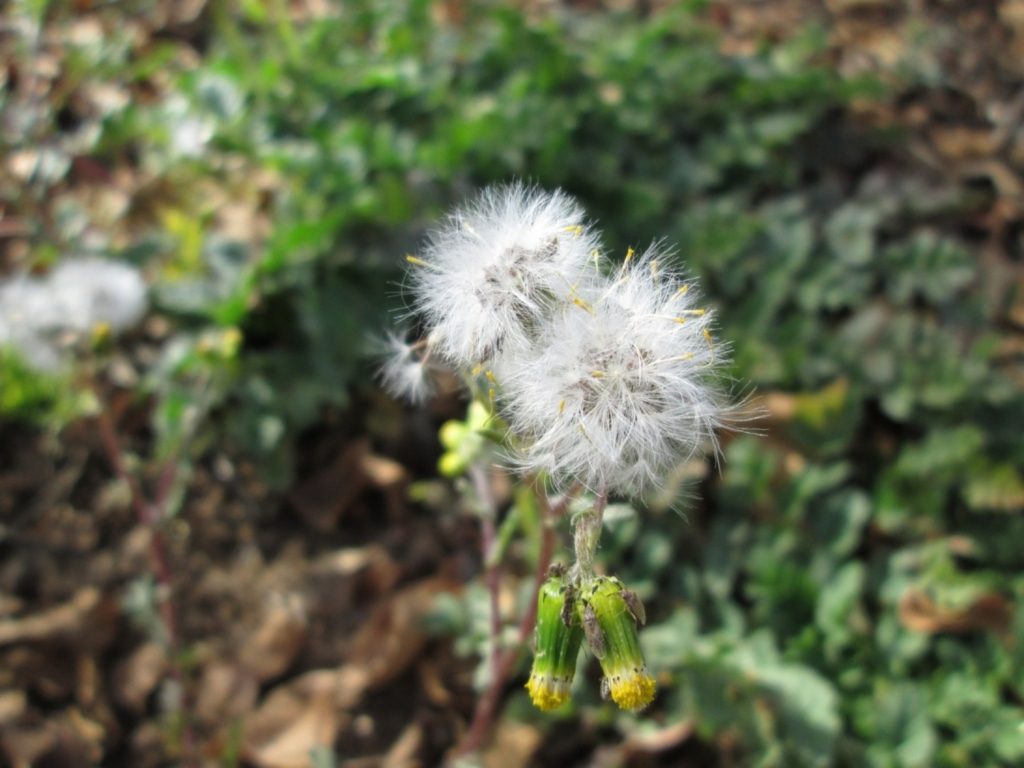
It aids in moisture retention
Another thing a good ground cover plant should do is help the soil retain moisture. Creeping thyme’s foliage weaves itself together tightly, layering over the soil, protecting it from the sun’s harsh rays, and, consequently, preventing rapid moisture loss.
Creeping thyme grows best in well-drained soil, but it has somewhat shallow root systems. So if you water your flower beds deeply, the ornamental shrubs, trees, and perennials will be able to get all of the moisture they need without competing with creeping thyme. Meanwhile, the creeping thyme’s soil will dry out fast enough to suit its liking, and the uppermost dry layer will help prevent evaporation for surrounding plants.
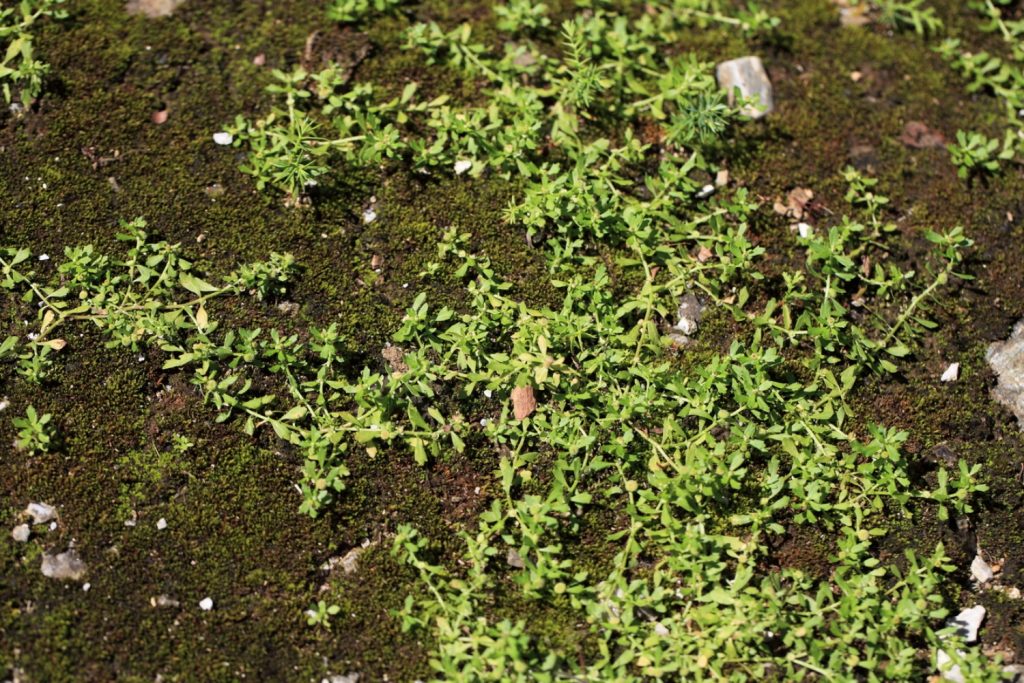
More tips for growing creeping thyme
To maximize your chances of success when growing creeping thyme, be sure to start the plants in spring or fall when the weather is mild. This helps the plants get established quickly. Pinching back young shoots also helps the plants to develop bushier growth, creating a nice carpet of fragrant foliage and nectar-rich flowers.
While there’s no need to fertilize your creeping thyme, do keep an eye out for diseases like root rot, as well as insects, like aphids and spider mites. Inspect the plants regularly for bugs and yellowing, dying foliage characteristic of diseases. Creeping thyme is incredibly hardy, but requires some extra care when it’s sick, just like any other plant. Use homemade insecticides and natural herbicides as needed to keep your creeping thyme healthy.
So, is creeping thyme invasive? The answer to this question is generally no. Of course, if your creeping thyme’s growing requirements are met, then it may grow so quickly that it seems like it’s invasive. Fortunately, unlike truly invasive plants, creeping thyme poses no threat to native plants, and actually helps support your local ecosystem by providing pollinating insects with a valuable food source. If you want to see more of your local wildlife, plant some creeping thyme in your garden today. You’ll be glad you did.
